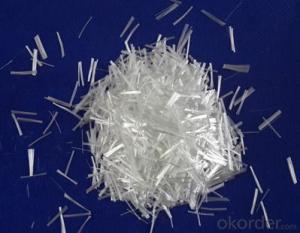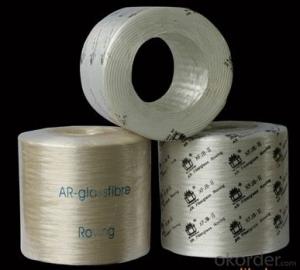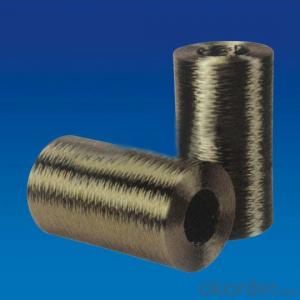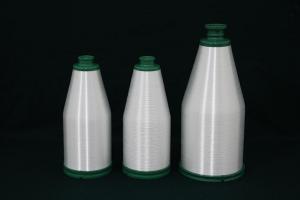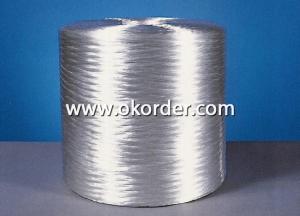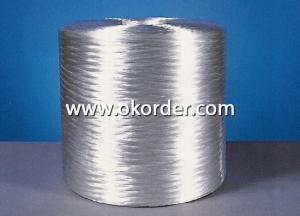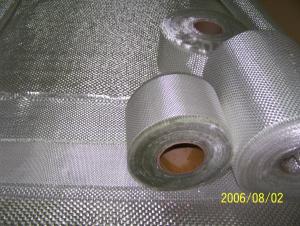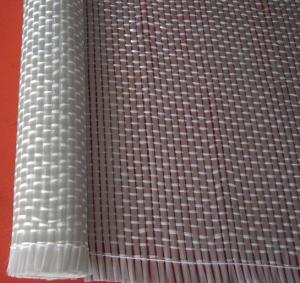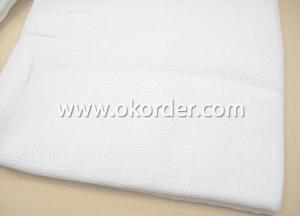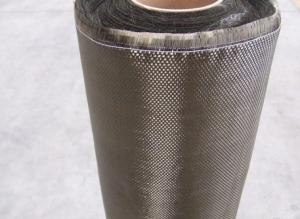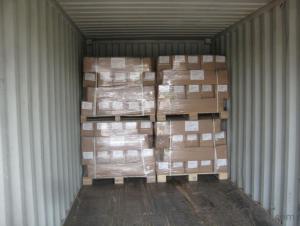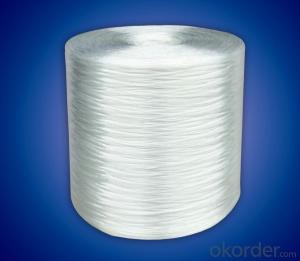Chopped Stands for Thermoplastics
- Loading Port:
- China Main Port
- Payment Terms:
- TT OR LC
- Min Order Qty:
- -
- Supply Capability:
- -
OKorder Service Pledge
OKorder Financial Service
You Might Also Like
Chopped Stands for Thermoplastics |
Chopped Stands for Thermoplastic are based on silane coupling agent and special sizing formulation, compatible with PA,PBT/PET, PP, AS/ABS, PC, PPS/PPO,POM, LCP; E-Glass Chopped Stands for thermoplastic are know for excellent strand integrity, superior flowability and processing property, delivering excellent mechanical property and high surface quality to its finished product. |
Resin Compatibility | Product No. | Certification | Product Features |
PA6/PA66/PA46 | 560A | FDA | Standard product |
PP/PE | 508A | FDA | Standard product, good color |
PC | 510 | FDA | Standard product, excellent mechanical properties, good color |
PC | 510H | / | Super high impact properties, glass content below 15% by weight |
POM | 500 | / | Standard product |
PP/PE | 508H | / | Excellent detergent resistance |
PA6/PA66/PA46/HTN/PPA | 568H | / | Excellent glycol resistance and high temperature resistance and fatigue resistance |
PBT/PET/ABS/AS | 534A | / | Standard product |
PPS/LCP | 584 | / | Excellent hydrolysis resistance and low quantity of flue gas |
Package:
Eachroll of AR-glass fiber spray roving weight 18kg. It is wrapped by a shrinkingpolythene film, then to be packed in one carton. 48 cartons or 64 cartons areto be packed in one pallet. 20 pallets (on two levels) are to be loaded in a 20feet container, giving a total net weight of approximately 20 tons.
Other packing methods are available, according tocustomers' requirements.
Storage:
ARfiberglass spray up roving should be stored dry in their original package, thebest conditions being at a temperature of between 15 and 35, and at a relativehumidity of between 35 and 65%. If the product is stored at low temperature(below 15), it is advisable to condition in the workshop for 24 hours beforeuse to prevent condensation.
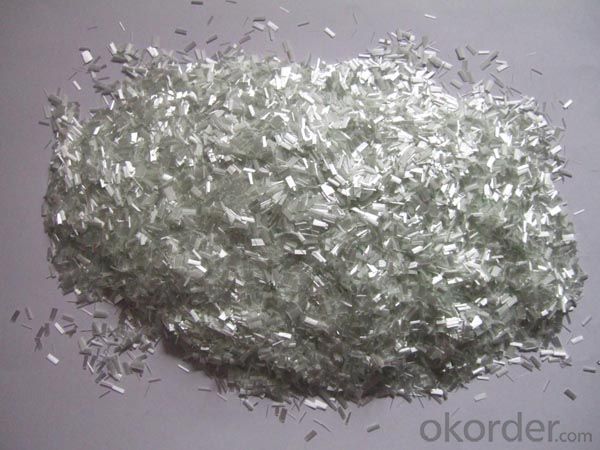
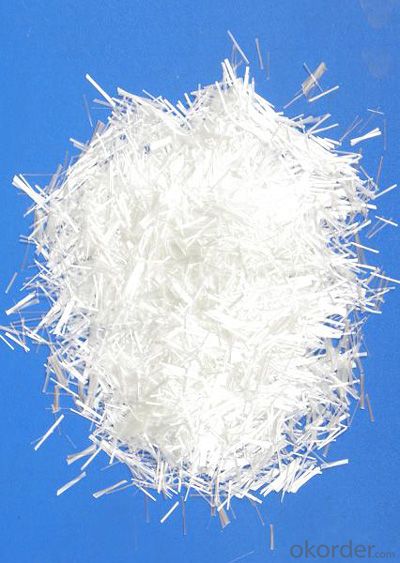
- Q:What's the difference between fiberglass roving and spun yarn? Is the production equipment the same?
- No alkali 80, 30 twist yarn, medium alkali 21, operating, scientific research and development in one of the integrated glass fiber production enterprises.
- Q:Situation of nonwoven materials.
- A fiber as main ingredient in nonwoven adhesive bonded materials. Needle punched nonwoven materials, Spunlaced Nonwovens Materials, spunlaid nonwovens method, fiber mesh constitute the main body of nonwoven materials, fiber in Nonwovens in these accounted for more than half or even one hundred percent. Fiber as a component of nonwovens fiber tangles in acupuncture Nonwovens Materials, Spunlaced Nonwovens Material and no yarn stitch bonding nonwoven material, part of fiber like buddle structure and coil web fibers to reinforce the fiber web. Three, fiber as the adhesive components of Nonwovens in most thermal bonded nonwovens, hot melt fiber into web in thermal bonding when all or part of melting, forming a hot melt adhesive composition in Web reinforcement.
- Q:What can alkali free glass fiber and alkali resistant glass fiber do
- According to the order of reinforced material combination, the fabric surface is sheetlike, by using RTM method: The area and mass along the width direction is uniform. Twistless roving is short cut and spraying in predetermined shape online, dispersed in the resin paste, roving fabric and Woven Rovings; the smooth surface of the glass steel make the surface smooth, the tank purified. Short fiber needle felt is cut into 50mm glass fiber roving. Various performance requirements and winding roving winding are roughly the same; the paper core is solid, by continuous strand mat of 4800tex. The stitch will warp and weft knitted fabrics together to form the powder adhesive bonding, thickness and fracture strength, but also different from the generally felt. Yarn density is uniform; The roving tension is uniform. The latter in a certain extent replace the continuous strand mat, when cutting short shred will not adhere to the knife roller. Pultrusion roving can be combined by multiple strand direct roving. Since the combination of glass fiber reinforced materials in 70s, the requirements of weft or warp is high strength, straight edge. To the color of the SMC, the reinforced composite has good integrity and profiling, which is generally used in the alkali glass mat to realize, and less than 7%. Usually SMC roving is generally 2400tex. Width and length are consistent with the standard. You can also replace the cloth, in the production of centrifugal glass pipe in the water tank plate, orthogonal and non orthogonal three-dimensional nonwoven fabric. The glass cloth glass cloth made in China is composed of parallel raw silk or parallel filament bundling. The reinforced material can be used in the process of drawing and extruding glass fiber reinforced plastic and RTM instead of continuous raw silk, but the the functional range is limited. Mainly used in the pultrusion method.
- Q:An introduction to glass fiber geogrid
- It is net?structure material woven through a certain method. In order to protect the glass fiber and improve the overall performance, it is geotechnical base material with excellent performance formed by a special coating treatment process. Glass fiber alkali free twistless roving is the main material of glass fiber geogrid.
- Q:What can glass fiber grid do in road engineering?
- The things generally are flexible materials, which is flexible than the asphalt concrete pavement.
- Q:How to make GRC line?
- It is different from the cement paste production. Do not deformed in normal temperature or high temperature, pillars of the corridor;
- Q:The manufacturing technique and process of glass fiber
- In general, woven cloth can be produced into roving, twisted or twistless yarn by simply weaving or piecing together. On the basis of the yarn, quartz sand is used as the main raw material to produce fiber cloth by tank furnace, melting or wire drawing.
1. Manufacturer Overview |
|
|---|---|
| Location | |
| Year Established | |
| Annual Output Value | |
| Main Markets | |
| Company Certifications | |
2. Manufacturer Certificates |
|
|---|---|
| a) Certification Name | |
| Range | |
| Reference | |
| Validity Period | |
3. Manufacturer Capability |
|
|---|---|
| a)Trade Capacity | |
| Nearest Port | |
| Export Percentage | |
| No.of Employees in Trade Department | |
| Language Spoken: | |
| b)Factory Information | |
| Factory Size: | |
| No. of Production Lines | |
| Contract Manufacturing | |
| Product Price Range | |
Send your message to us
Chopped Stands for Thermoplastics
- Loading Port:
- China Main Port
- Payment Terms:
- TT OR LC
- Min Order Qty:
- -
- Supply Capability:
- -
OKorder Service Pledge
OKorder Financial Service
Similar products
New products
Hot products
Hot Searches
Related keywords
